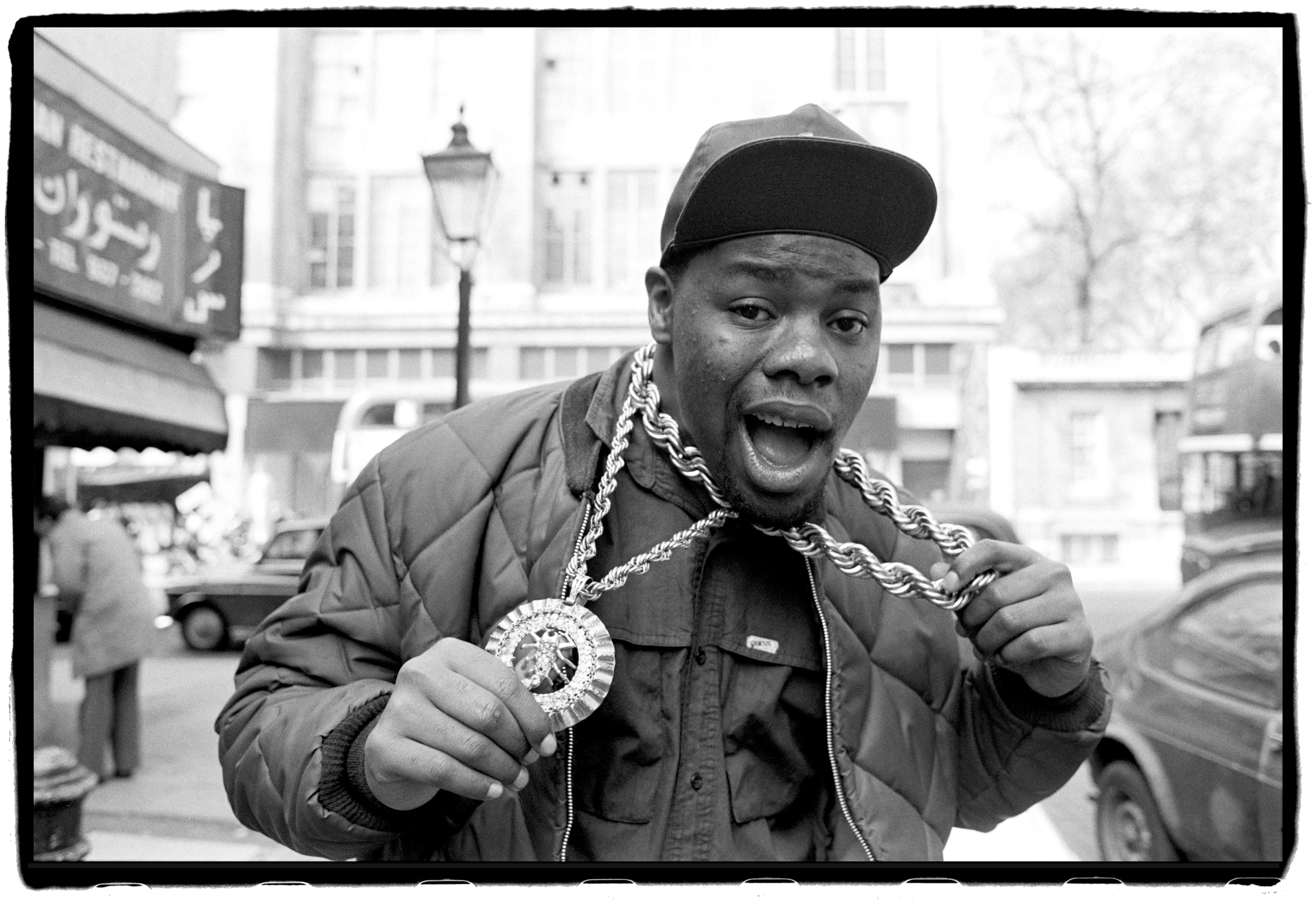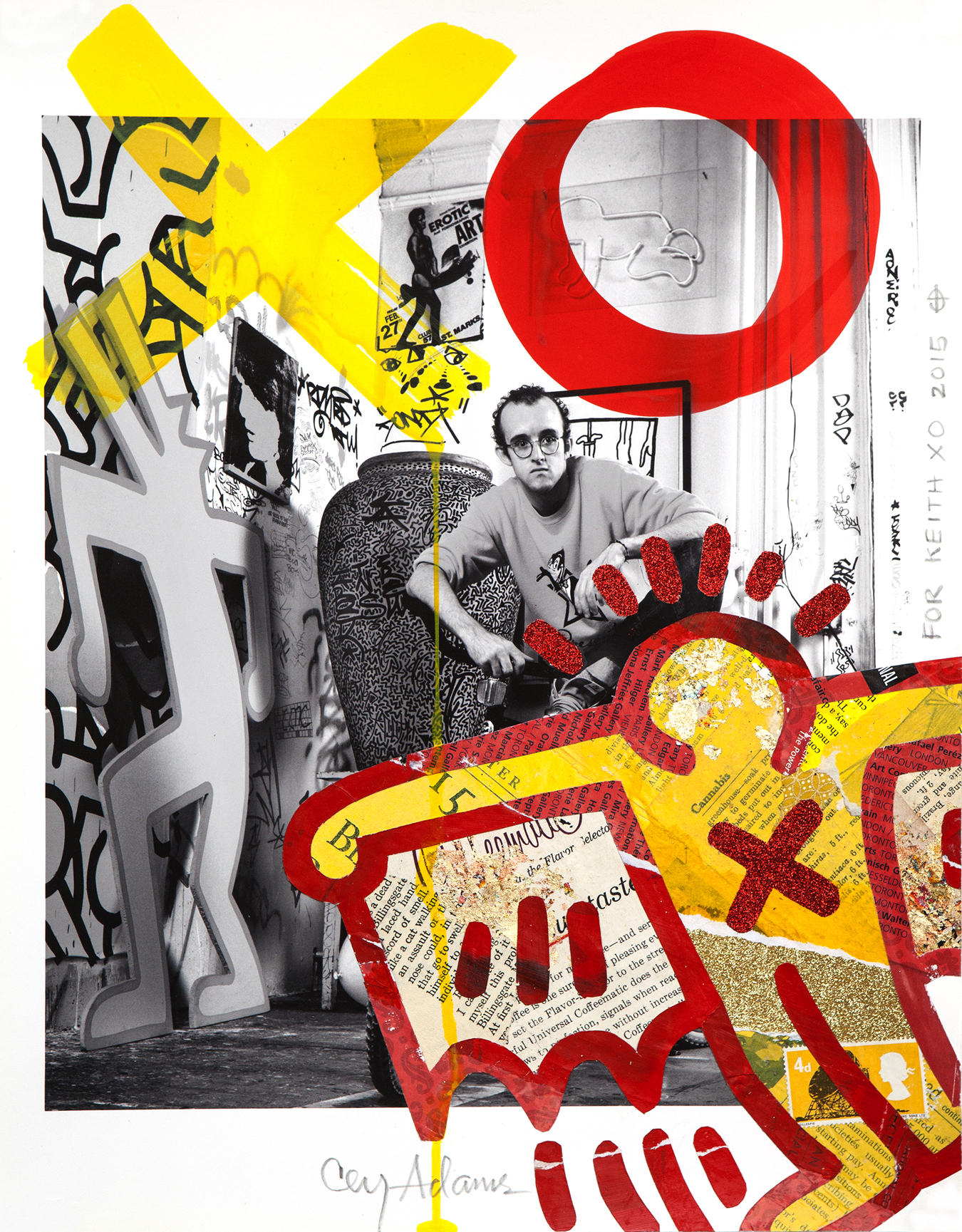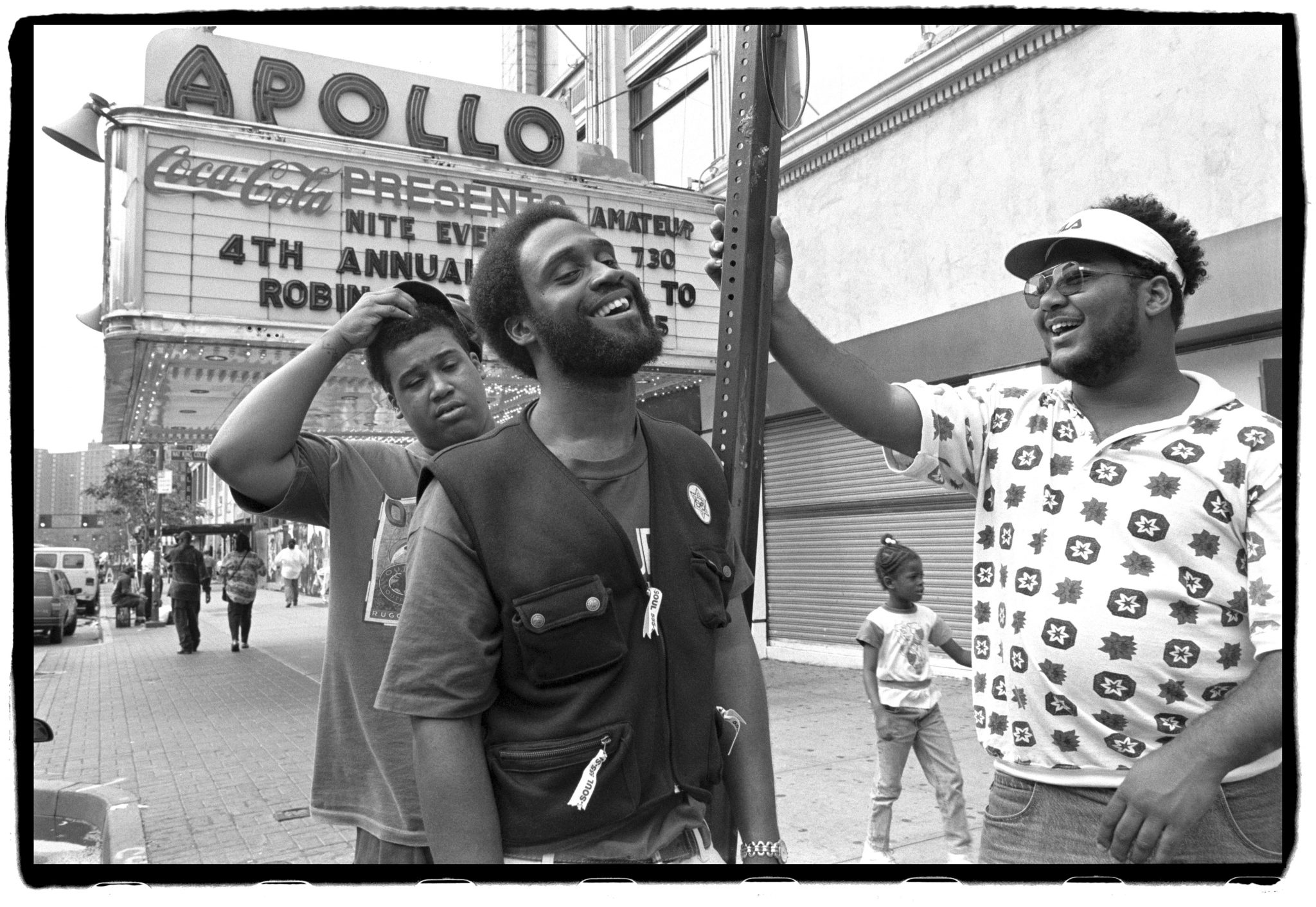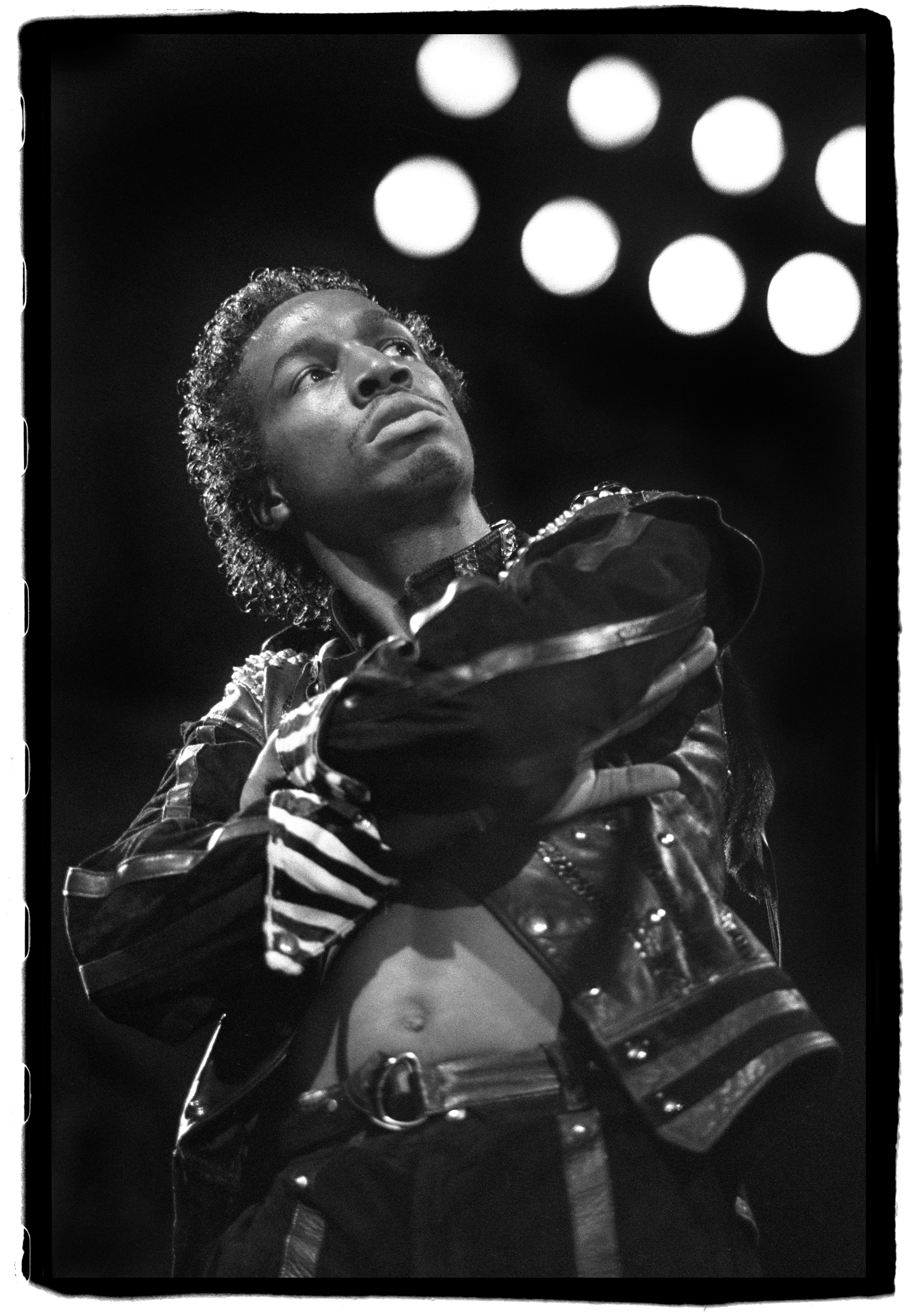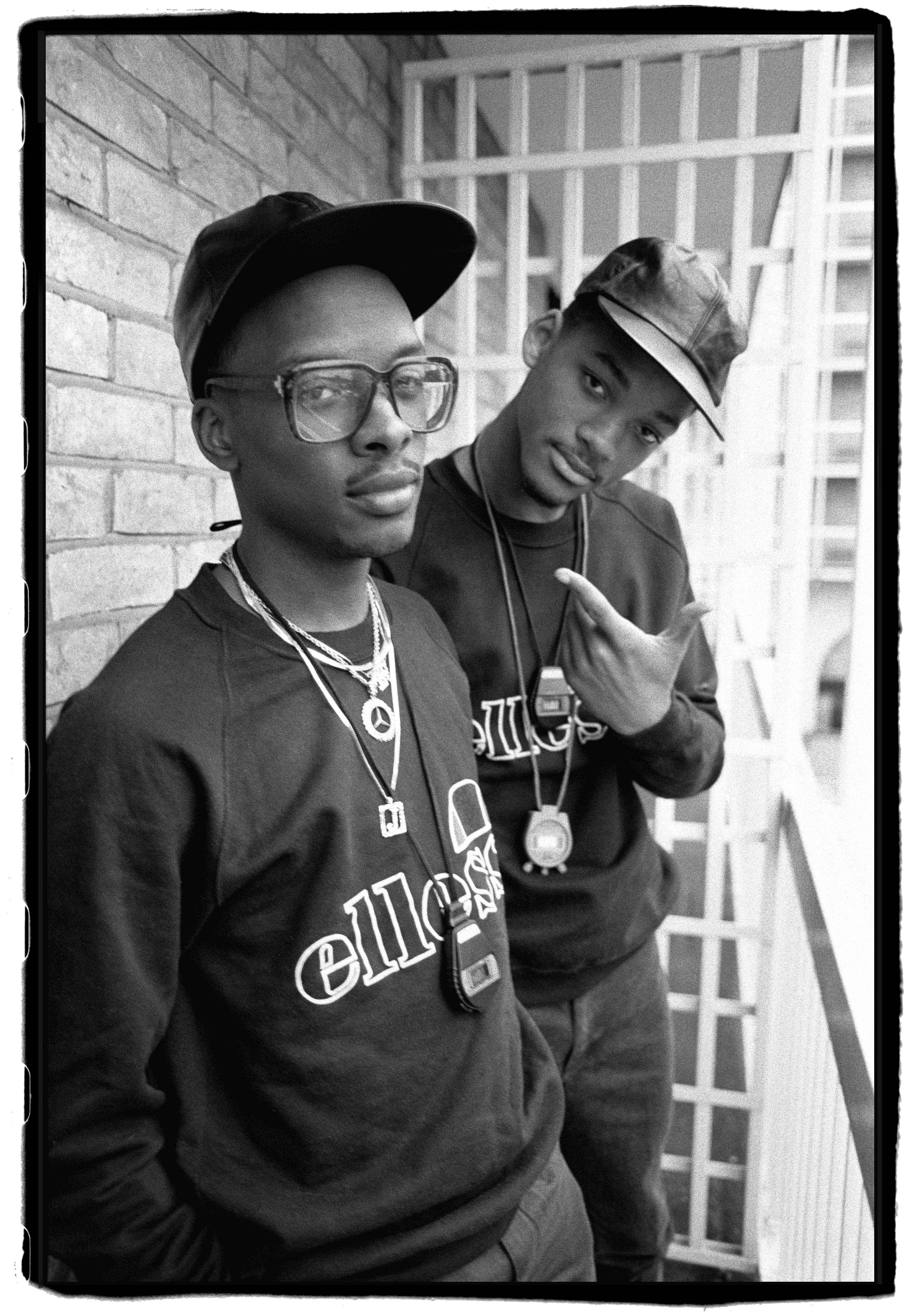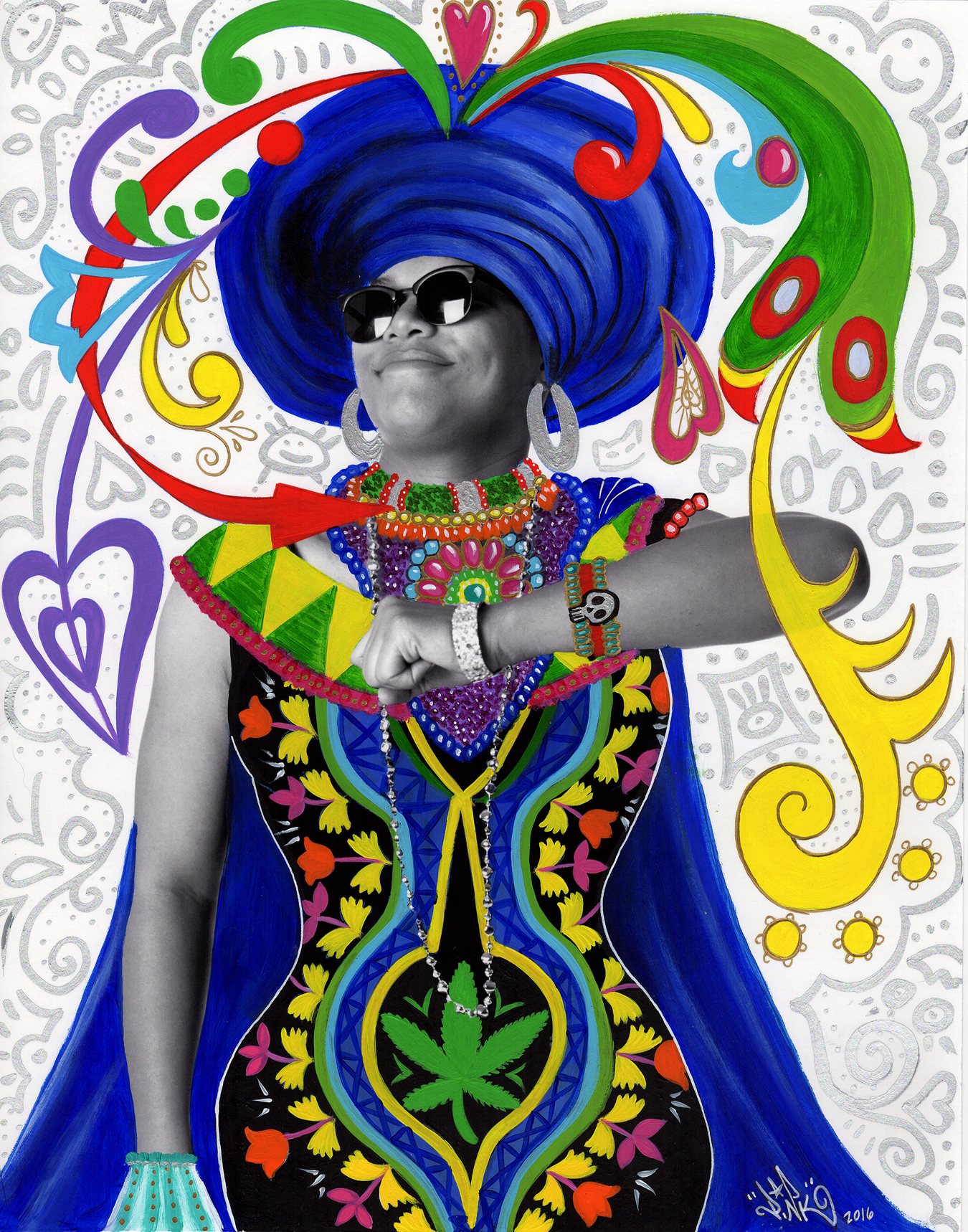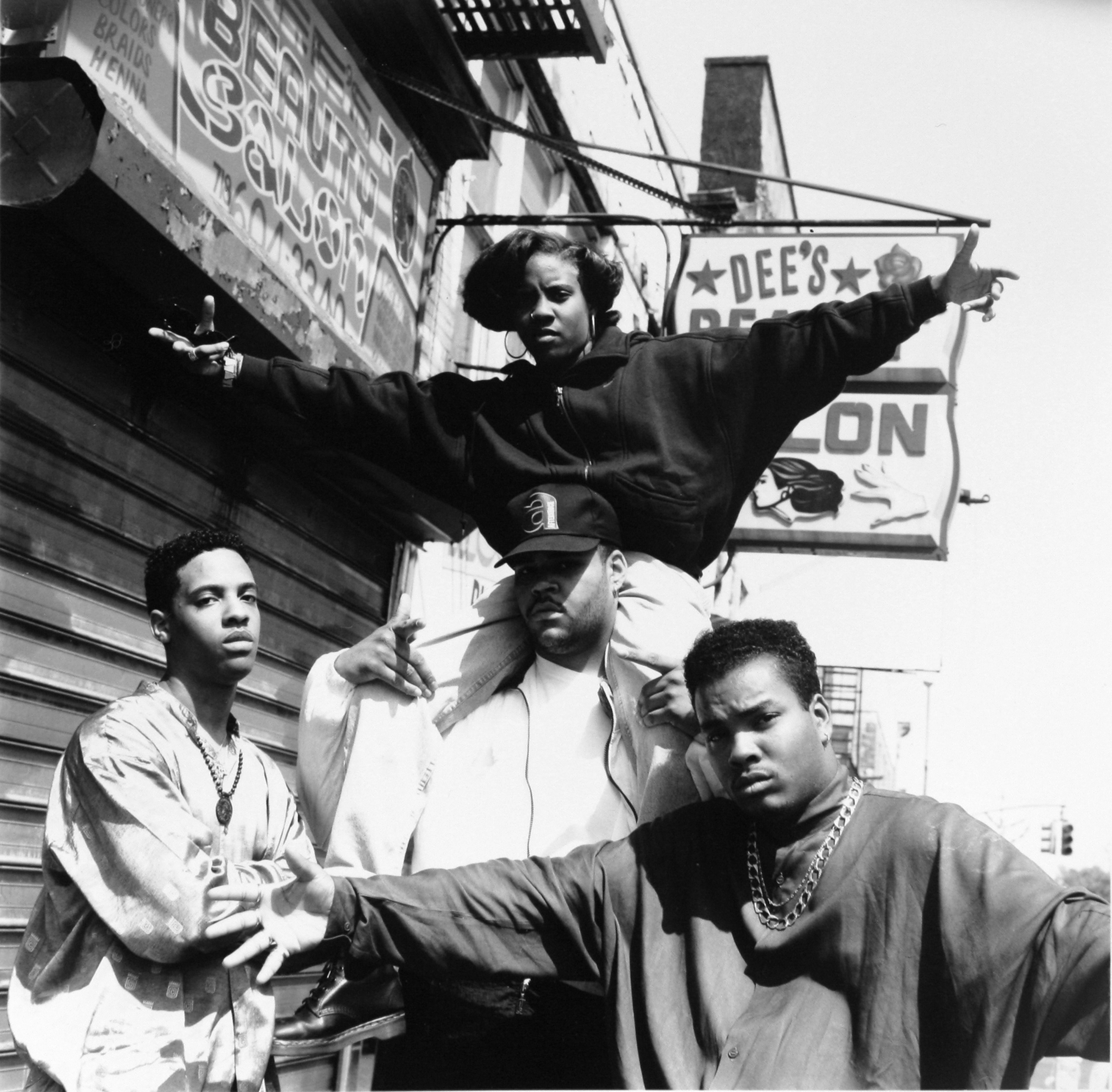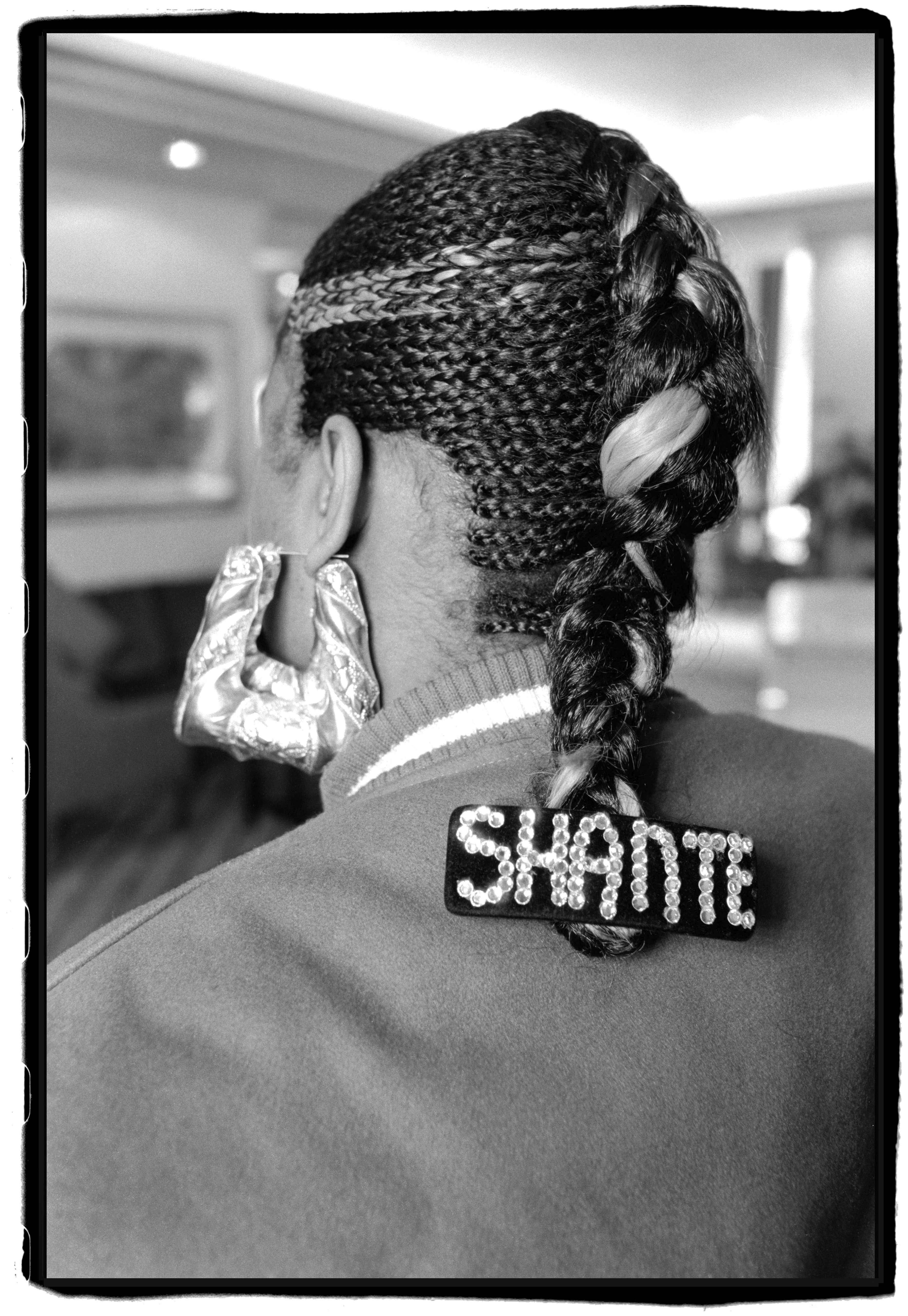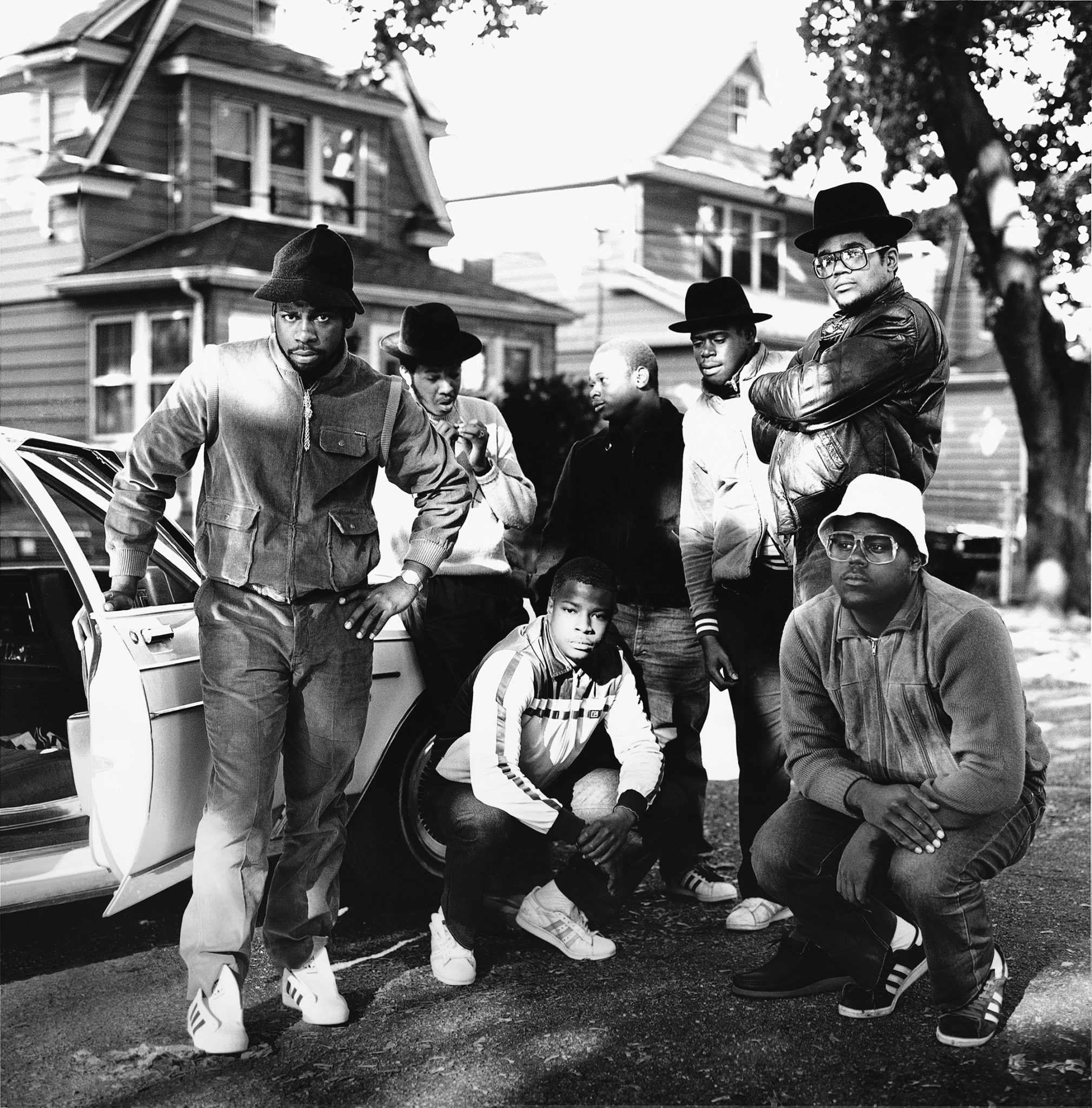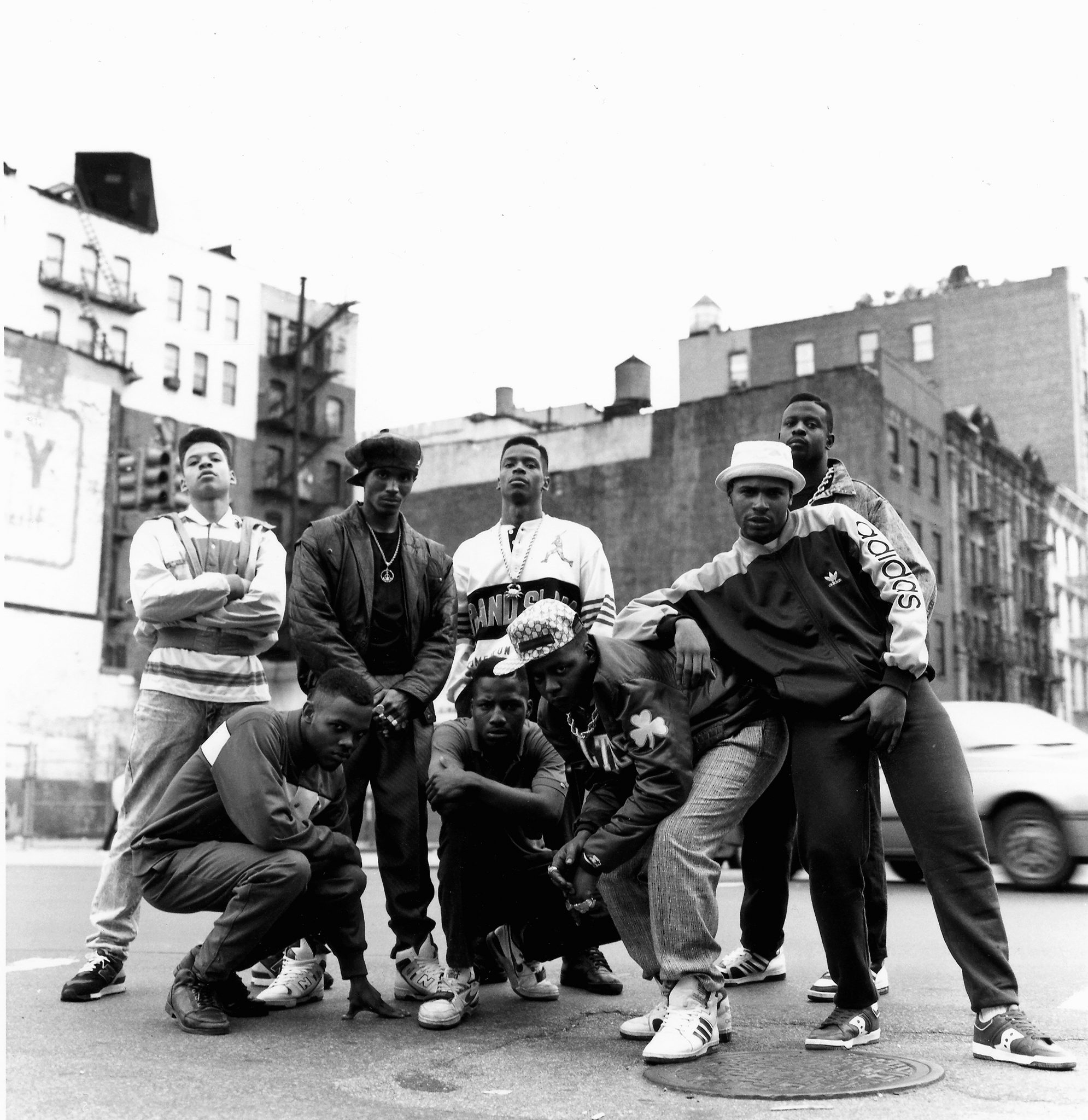Beat Positive Explores a Photographic History of Late ’80s & Early ’90s Hip Hop
Photographers David Corio and Janette Beckman discuss their new exhibition in collaboration with Getty Images
Hailing from across the pond, photographers David Corio and Janette Beckman focused their work in documenting a photographic history of underground music scenes from London to New York. Seaport’s 10 Corso Como presents Beat Positive, a new exhibition from the duo in collaboration with Getty Images Archive and Fahey/Klein Gallery that documents a burgeoning hip hop culture in its prime from 1981 to 1993. Featuring some never before seen images alongside iconic classics, Corio and Beckman sit down to chat with V for an inside look at their upcoming exhibition.
The collection of photographs was shot in New York and London between 1981 to 1993. Why is this time period an important time to highlight through iconic photographs?
JB: This time period is the beginning of hip hop when it was raw and fresh. Artists captured in our photographs like Grand Master Flash, Salt’n Pepa, LL Cool J, Run DMC and Public Enemy are the ‘ Godfathers and Godmothers’ of hip hop today.
DC: It was a time when acts were finding their feet by experimenting with different musical styles using break beats and scratching; break dancing and graffiti were important aspects of the whole hip hop culture and fashions and styles were changing rapidly too. It covers a time when hip hop broke out from being a fairly underground musical genre to it going mainstream but before it became such a dominant force in the US music scene.
How did you come up with the title Beat Positive for this exhibition?
JB + DC: The curator of the exhibition Shawn Waldron came up with that when we originally exhibited it in London. It sums up this period of hip hop really well I think.
What are some things you’re hoping viewers will leave with after viewing this gallery?
JB: The artists that we photographed were mostly at the start of their careers, passionate about making music, rapping, graffiti, breakdancing. It was a time in New York when, not unlike the punk era in London which David and I both documented, kids had little chance of getting jobs, the city was broke, they were expressing themselves, telling stories about their lives.
DC: Hopefully they will see that this was a time when you could take more intimate photos of people as they weren’t controlled by lots of stylists and art directors. It was also a time when we were shooting film so I think photographers had to be more selective knowing that they only had a certain amount of shots available to them before the film ran out. It made composition and exposures more important and you couldn’t press a button to see what the shot looked like after you had taken it compared to digital photography now.
Who are some of the main hip-hop influences featured in this exhibition?
JB: JB Run DMC, Big Daddy Kane, Eric B & Rakim, Salt ’n Pepa, Public Enemy, De La Soul – some of the greatest of all time.
DC: Mine would be Grandmaster Flash, Afrika Bambaataa, Public Enemy, Eric B & Rakim, De La Soul, Roxanne Shante and also images of break dancers in New York and London and Dondi White the legendary graffiti artist along with a pair of Run DMC’s Adidas.
How important is the crossover between high art and hip-hop?
JB: Rebel cultures that come from the street are all ‘high art’ to me Whether it is a tattoo by Mr Cartoon, a jacket by Dapper Dan, a rhyme by Rakim, a graffiti mural by Lady Pink. .. to me these folk were following their passions with no rules, no financial backing, nothing could stop them.
DC: Hip hop has certainly had a huge impact on the fashions that we see today. You could point to artists like Jean Michel Basquiat and Keith Haring who both had a background in the New York scene when hip hop was just starting to create its own identity and break out from the street to now becoming giants of the late 20th century art scene. In that respect hip hop has probably had more of an impact on high art than vice versa.
What is your favorite photograph in the gallery?
JB: I have always loved David’s photograph of Africa Bambaata at the first hip hop show to come to London. We were both at that concert taking photos for different weekly papers. For me it was a life changing experience seeing all those artists graffiti, DJ’s, rappers, breakdancers, double dutch girls on the stage together. This image is really beautiful.
DC: I still haven’t seen all the other photographers’ work but I will go with Janette’s image of Slick Rick. It’s a great iconic image – fun and stylish and very different to my photos.
What was your inspiration behind shooting these photographs?
JB: The music and the culture. I always try to listen to the music before I photograph an artist. A portrait is always a collaboration between me and the subject, I love to shoot on the street because you never know what is going to happen, like the photo of The Freshmen, they were posing outside a deli on the LES when some school kids came around the corner and decided to jump into the photo, you couldn’t set a shot up like that. Studio portraits are great too, back in the day we would hang out, play music, in Slick Rick’s case drink champagne – that portrait I have of ‘Rick the Ruler’ with a bottle of Moet, the Fendi bag, grabbing his crotch is just so hip hop. It’s always about capturing that moment in time.
DC: I would always try and know a bit about the subject I am about to photograph before I do any shoot so obviously each musician’s work would hopefully be an inspiration. On the photographic front, I have always loved many of the great street photographers so Henri Cartier Bresson’s famous phrase of ‘capturing the decisive moment’ is always close to my heart as are the works by Bill Brandt, Andre Kertesz, Roy Decarava and Irving Penn to name just a few.
How was it partnering with Shawn Waldron, the curator of Getty Images?
JB: Shawn has been great – he is a hip hop fan- he grew up listening to DJ’s like D-Nice. It’s great to work with a curator that understands the genre.
DC: It makes life a lot easier when you are working with someone who has a similar aesthetic and knows how to collate a body of work together from different photographers. The images cover a period when there were a lot of changes within hip hop and I think it covers many aspects of that time. Obviously it can never be totally comprehensive, but I think Shawn has covered the whole period really well.
If you could photograph any hip-hop artist, living or dead, who would it be?
JB: I would love to have photographed Tupac. Nas and Lizzo are also on the list.
DC: I only got to shoot Biggie Smalls a couple of times in concert and I would have loved to have done some portraits of him. Tupac is the other one I never got to snap who I would have really liked to have photographed.
In your opinion, how has hip-hop changed throughout the years since these photographs were taken? Do you notice any new trends when photographing hip-hop artists?
JB: Nowadays hip-hop seems to be much more commercially driven, artists can become extremely successful in a short time. I think if you are working with big stars the shoots are more produced and carefully curated, perhaps less spontaneous. The artists and labels control the images. I was lucky enough to photograph some up and coming rappers in LA this Spring. We had five minutes or less with each artist and shot maybe twenty-five artists over a period of two hours, they all came with their own style and attitude. They were amazing.
DC: Back when we were starting to take these photos, it was almost like an underground cult with hardly any airplay on the radio, certainly no videos on MTV, little mention in the press and probably little expectation of getting much mainstream support. I was taking photos at a music festival in Ramallah in the West Bank of Palestine earlier this year and the dominant musical style from young local artists was hip hop. It has crossed all barriers and borders.
The exhibition opens November 21, 2019 and is open to view through February 2, 2020 at 10 Corso Como, New York
